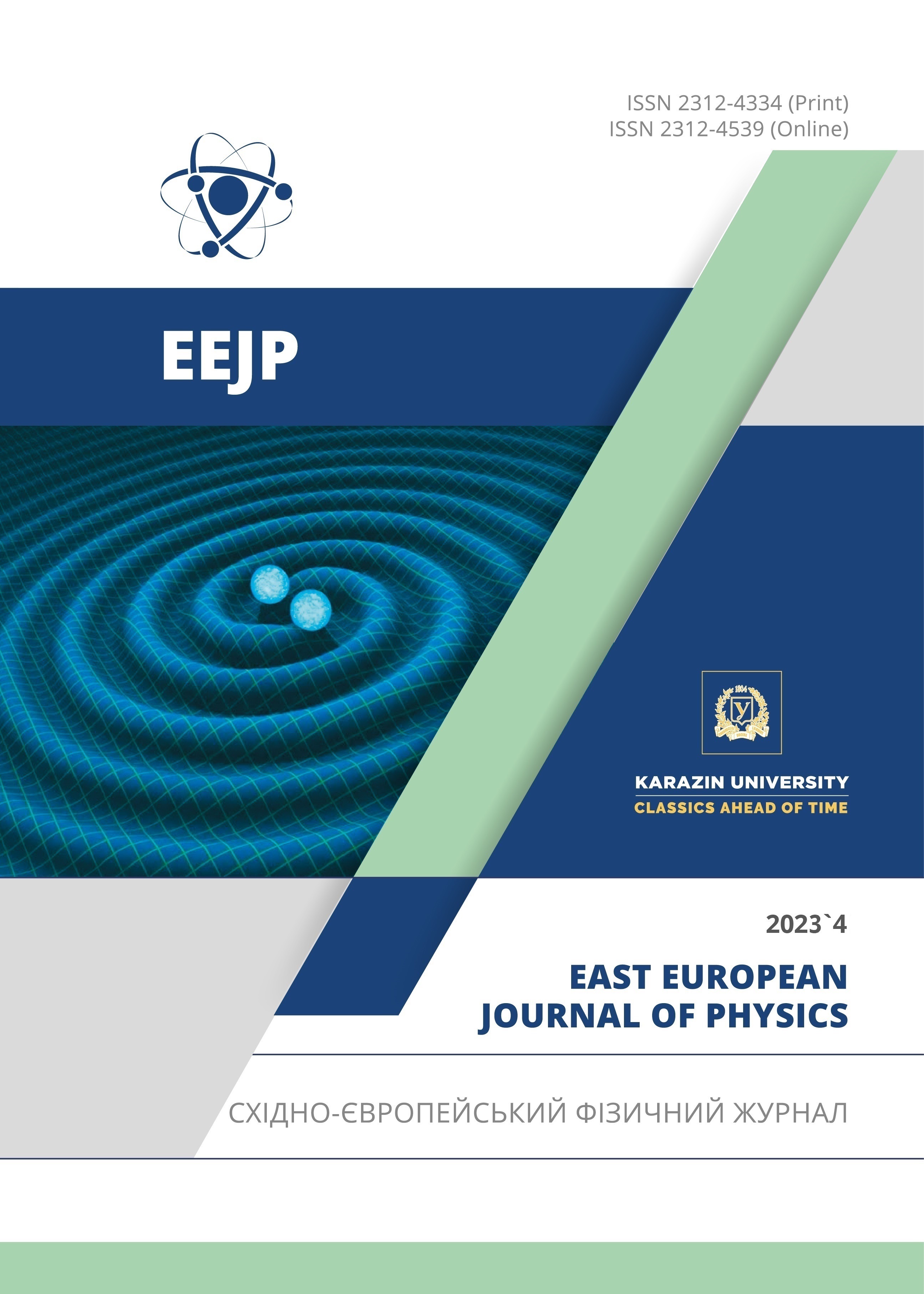Enhanced Heat Transfer Analysis on MHD Hybrid Nanofluid Flow Over a Porous Stretching Surface: An Application to Aerospace Features
Abstract
The advancement of aircraft technology has presented manufacturers with new criteria and problems for the functioning of their devices. It is essential that, in order to guarantee the secure operation of aerospace machinery, the failure mechanisms be identified and the operational durability of critical structural components be improved as quickly as possible. New aviation materials have been developed in modern years. In an aviation engine, engine oil lubricates, cools, washes, maintains against rust, decreases sound, and accelerates. Most important is lubrication. All mechanical components would burn out if not maintained. The aim of this work is to minimize costs by extending the operational life of aircraft components (mechanical and motor parts) and enhancing fuel mileage and flying distance. Based on the importance of the inspiration on magnetohydrodynamic Aluminum Oxide-Cobalt hybrid nanofluid flow over a stretching surface (SS) in the existence of porous medium, and thermal radiation are investigated. In this model we used Engine oil mixed with Aluminum Oxide and Cobalt nanoparticles. By using the suitable self-similarity variables, the PDE is transformed into ODEs. After then, the dimensionless equations are solved by using the Maple built in BVP Midrich scheme. Graphs and tables explain how the operational factors affect fluid flow efficiency. Compared to nanofluids, hybrid nanofluids have a better heat transfer rate.
Downloads
References
M. Sheikholeslami, Application of control volume based finite element method (CVFEM) for nanofluid flow and heat transfer, (Elsevier Science, 2018).
S. Das, S.U. S. Choi, and H.E. Patel, “Heat transfer in nanofluids - a review,” Heat Transfer Engineering, 27(10), 3–19 (2007). https://doi.org/10.1080/01457630600904593
B.A. Bhanvase, D.P. Barai, S.H. Sonawane, N. Kumar, and S.S. Sonawane, “Intensified Heat Transfer Rate With the Use of Nanofluids,” in: Intensified heat transfer rate with the use of nanofluids, (Elsevier, 2018). pp. 739-750. https://doi.org/10.1016/B978-0-12-813351-4.00042-0
S.R.R. Reddy, P. Bala Anki Reddy, and A.M. Rashad, “Activation Energy Impact on Chemically Reacting Eyring–Powell Nanofluid Flow Over a Stretching Cylinder,” Arab. J. Sci. Eng. 45(7), 5227–5242 (2020). https://doi.org/10.1007/s13369-020-04379-9
M. Gupta, V. Singh, R. Kumar, and Z. Said, “A review on thermophysical properties of nanofluids and heat transfer applications,” Renewable and Sustainable Energy Reviews, 72, 638-670 (2017). https://doi.org/10.1016/j.rser.2017.02.073
B. Mehta, D. Subhedar, H. Panchal, and Z. Said, “Synthesis, stability, thermophysical properties and heat transfer applications of nanofluid – a review,” J. Mol. Liq. 364, 120034 (2022). https://doi.org/10.1016/J.MOLLIQ.2022.120034
S.U.S. Choi, and J.A. Eastman, “Enhancing Thermal Conductivity of Fluid with Nanoparticles,” ASME Fluids Engineering Division, Scientific Research Publishing,” 231, 99-105 (1995). https://ecotert.com/pdf/196525_From_unt-edu.pdf
S. Jakeer, and P.B.A. Reddy, “Entropy generation on the variable magnetic field and magnetohydrodynamic stagnation point flow of Eyring – Powell hybrid dusty nanofluid: Solar thermal application,” Proc. Inst. Mech. Eng. Part C J. Mech. Eng. Sci., 236(13), (2022). https://doi.org/10.1177/09544062211072457
N.S.M. Hanafi, W.A.W. Ghopa, R. Zulkifli, S. Abdullah, Z. Harun, and M.R.A. Mansor, “Numerical simulation on the effectiveness of hybrid nanofluid in jet impingement cooling application,” Energy Reports, 8, 764–775 (2022). https://doi.org/10.1016/J.EGYR.2022.07.096.
Azmi, et al. “A review on thermo-physical properties and heat transfer applications of single and hybrid metal oxide nanofluids,” Journal of Mechanical Engineering and Sciences, 13(2), 5182-5211 (2019). https://doi.org/10.15282/JMES.13.2.2019.28.0425
S. Arulmozhi, K. Sukkiramathi, S.S. Santra, R. Edwan, U. Fernandez-Gamiz, and S. Noeiaghdam, “Heat and mass transfer analysis of radiative and chemical reactive effects on MHD nanofluid over an infinite moving vertical plate,” Results Eng. 14, 100394 (2022). https://doi.org/10.1016/J.RINENG.2022.100394
S.R.R. Reddy, and P.B. Anki Reddy, “Thermal radiation effect on unsteady three-dimensional MHD flow of micropolar fluid over a horizontal surface of a parabola of revolution,” Propuls. Power Res. 11(1), 129–142 (2022). https://doi.org/10.1016/J.JPPR.2022.01.001
S. Jakeer, and B.A.R. Polu, “Homotopy perturbation method solution of magneto-polymer nanofluid containing gyrotactic microorganisms over the permeable sheet with Cattaneo–Christov heat and mass flux model,” Proc. Inst. Mech. Eng. Part E J. Process Mech. Eng. 236(2), 525–534 (2022). https://doi.org/10.1177/09544089211048993
S. Jakeer, and P.B.A. Reddy, “Entropy generation on EMHD stagnation point flow of hybrid nanofluid over a stretching sheet: Homotopy perturbation solution,” Phys. Scr. 95(12), 125203 (2020). https://doi.org/10.1088/1402-4896/abc03c
X. Zhang, Y. Chen, and J. Hu, “Recent advances in the development of aerospace materials,” Prog. Aerosp. Sci. 97, 22–34 (2018). https://doi.org/10.1016/J.PAEROSCI.2018.01.001
H. Xia, P.G. Tucker, and W.N. Dawes, “Level sets for CFD in aerospace engineering,” Prog. Aerosp. Sci. 46(7), 274–283 (2010). https://doi.org/10.1016/J.PAEROSCI.2010.03.001
M. Ramzan, F. Ali, N. Akkurt, A. Saeed, P. Kumam, and A. M. Galal, “Computational assesment of Carreau ternary hybrid nanofluid influenced by MHD flow for entropy generation,” J. Magn. Magn. Mater. 567, 170353 (2023). https://doi.org/10.1016/j.jmmm.2023.170353
G. Ramasekhar, and P.B.A. Reddy, “Entropy generation on EMHD Darcy-Forchheimer flow of Carreau hybrid nano fluid over a permeable rotating disk with radiation and heat generation : Homotopy perturbation solution,” Proc. Inst. Mech. Eng. Part E: J. Process Mech. Eng. 237(4), 1179-1191 (2023). https://doi.org/10.1177/09544089221116575
A. Divya, and P.B.A. Reddy, “Aerospace aspects of electromagnetohydrodynamic dusty fl ow of hybrid nano fl uid with entropy generation over a rotating disk,” Proc. Inst. Mech. Eng. Part E: J. Process Mech. Eng. 237(2), 196-206 (2023). https://doi.org/10.1177/09544089221102417
Copyright (c) 2023 R. Chandra Sekhar Reddy, Gunisetty Ramasekhar

This work is licensed under a Creative Commons Attribution 4.0 International License.
Authors who publish with this journal agree to the following terms:
- Authors retain copyright and grant the journal right of first publication with the work simultaneously licensed under a Creative Commons Attribution License that allows others to share the work with an acknowledgment of the work's authorship and initial publication in this journal.
- Authors are able to enter into separate, additional contractual arrangements for the non-exclusive distribution of the journal's published version of the work (e.g., post it to an institutional repository or publish it in a book), with an acknowledgment of its initial publication in this journal.
- Authors are permitted and encouraged to post their work online (e.g., in institutional repositories or on their website) prior to and during the submission process, as it can lead to productive exchanges, as well as earlier and greater citation of published work (See The Effect of Open Access).








